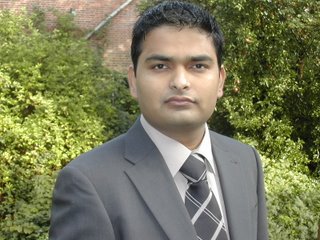My District - Pune

Pune (IPA: pʊɳe, Marathi: पुणे) is a city located in the western Indian state of Maharashtra, and also the capital of Pune District in which it is located. It is the 8th largest city in India with a population of 4.5 million, and the second largest in the state of Maharashtra. It is located roughly 160 kilometres east of Mumbai at an altitude of 560 metres above sea level. It is situated at the eastern edge of the Western ghats on the Deccan plateau.
Pune has a reputation for its several esteemed colleges and educational institutions, and is also home to many software and IT companies. Pune is widely considered the cultural capital of Marathi-speaking Maharashtrians. Although Marathi is the main language of Pune, its cosmopolitian population speaks several other languages like English, Hindi and Gujarati.
Pune started out as Punnaka - an agricultural settlement in the 8th century. The earliest evidence (copper plates dating 758 AD and 768 AD) reveals that this region was ruled by the Rashtrakutas. It came under mughal rule in the 11th century.
Until circa 1818, it continued to be ruled by various dynasties, especially the Mughals and the Marathas. During the mid 17th century, it became the temporary residence of Marathi King Shivaji. In 1749 A.D, it prominence as the capital of the Maratha kingdom under the Peshwa rule. It was during this period that the city expanded considerably[1].
Pune's medieval roots are also evident in number of temples and mosques. The oldest existing structure in the city is the rock-cut temple of Pataleshwar, from the 8th century AD. The cave-temple complex is also called Panchaleshvara cave. This cave, once situated outside limits of the old town, is now squarely in the middle of the city off the Jungli Maharaj road.
Pune is inextricably linked to the life of the great Maratha hero and king, Chhatrapati Shivaji. The era of Pune's fame began when Chhatrapati Shivaji came to stay here with his mother Jijabai in 1635-36. They lived in a mansion known as "Lal Mahal," a replica of which still can be visited at its original location in the city. According to local lore, the Kasba Ganapati Mandir, regarded as the presiding deity of the city (gramadevata), was built by Jijabai.
Pune is located at 18°32' North 72° 51' East (See satellite view), near the western margin of the Deccan Plateau. It lies on the leeward side of the Sahyadri ranges and Western Ghats, 560 m (1837 ft) above the sea level, at the confluence of Mula and Mutha rivers, which are tributaries of the Bhima. Two more rivers, Pavana and Indrayani traverse the Northwestern outskirts of the urban area. The Sinhagad-Katraj-Dive Ghats range is the Southern Boundary of the urban area. The highest point in the city is Vetal Hill (800 m or 2625 ft above sea level) whereas the highest point just outside the urban area is the Sinhagad Fort (1300 m or 4265 ft above sea level).
English dailies such as the Indian Express and The Times of India have editions based out of Pune, with additional local supplements. Marathi newspapers such as Sakal, Loksatta, Kesari and Pudhari are equally, if not more, popular with Punekars.
All professional colleges in Pune are affiliated to the University of Pune, one of the largest universities in the world in terms of matriculation. Prominent ones include:Deccan College (one of the oldest in western India) College of Engineering, Pune (second oldest in the Subcontinent)
Fergusson College, established 1885 (amongst ten most reputed in India) Agricultural College (one of the earliest in the country) Gokhale Institute of Politics and Economics (one of the oldest, and also one of the most reputed institute for research and higher studies in Economics in India)
Symbiosis Institutes.
Official websites
Pune City Guide
Pune Municipal Corporation E-Governance
Pune news
Interactive Map of Pune
Pune Classifieds
Pune Forums
A list of Bloggers from Pune


